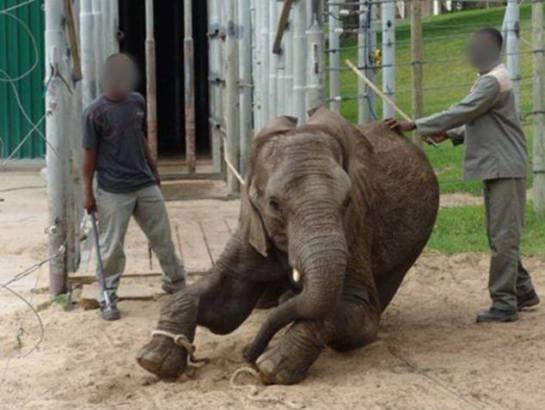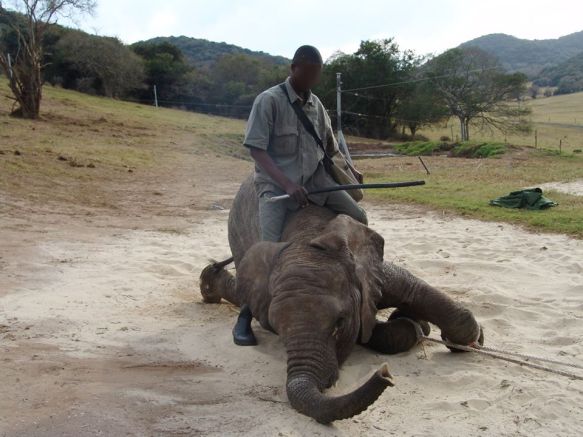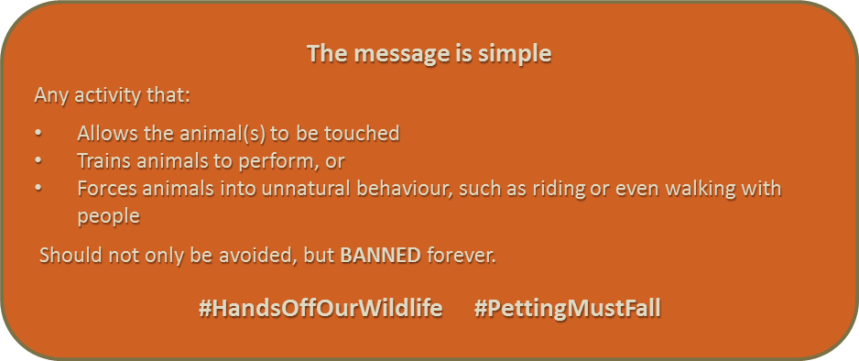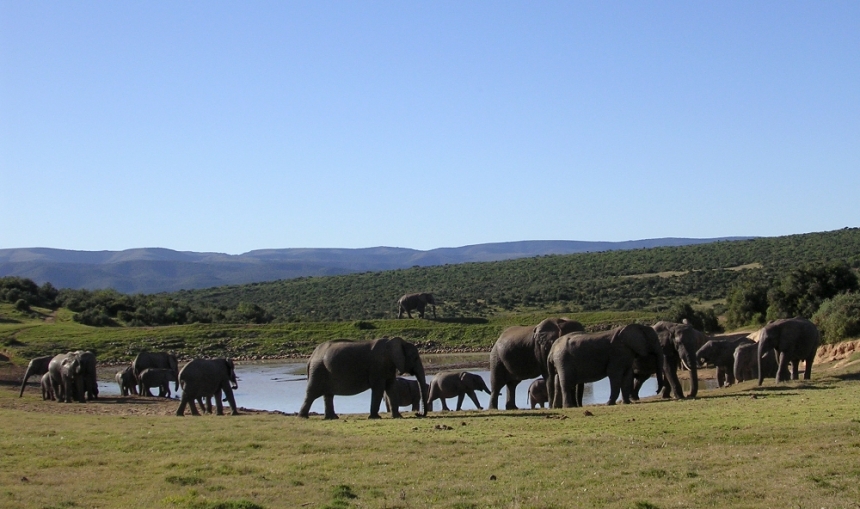
The cruel and harsh reality behind elephant back riding in Asia is well documented and the ripple effects of educating the travelling public and raising awareness among the tour operators is slowly starting to pay off.
Despite this growing international move away from the controversial practice of elephant riding, the activity is still widely available in South Africa. There seems to be a belief that the training of African elephants does not involve the same kind of cruel practices as those inflicted on its Asian cousin. Although the cruelty may not be quite of the same level compared to Asia, Isabel Wentzel, previously at the NSPCA Wildlife Protection Unit, now curator at SAASA says “There is no quick, easy or humane way to ‘train’ elephants to accept humans riding them, nor to ‘tame’ wild elephants, often forcibly removed from their herds, which in itself is inhumane and unacceptable.”
I am a scientist at heart, so I will examine the facts of what we know about the industry in South Africa. This will hopefully lead to:
- Facts to debunk the myths around the African elephant back safari industry.
- Facts to win any debate around controversial and/or emotive wildlife issues.
- Facts to give people the option to make informed and educated choices.
- Facts to bring about further necessary behavioural change towards more ethical wildlife encounters.
Fact: The African elephant (Loxodonta africana) is classed as Vulnerable on the IUNC Red List of Threatened Species. The elephant population in South Africa is listed in CITES Appendix II. The proposal to transfer the Southern African elephant population to Appendix I has again been declined during CITES COP17. The move to Appendix I would have made commercial international trade in specimens taken from the wild illegal.
Myth: Captive breeding supports elephant conservation. The IUCN does not consider captive breeding as a significant contributor to effective elephant conservation, mostly due to poor breeding success and low life expectancy.
Fact: A report published in June 2015 by the NSPCA on the welfare status of elephants in captivity in South Africa revealed that we have 26 elephant back safari and sanctuary facilities nationwide, housing a total of approximately 125 elephants. Just over half of these facilities offered elephant back riding at the time this report was published.
Only one establishment, Camp Jabulani in Hoedspruit, has since announced that from April 2017 they will no longer offer elephant riding to tourists. Well done you guys! Who is to follow….?
Myth: Elephants in captivity are domesticated. The fact that elephants are habituated to humans does not mean they are even semi-domesticated. The process of domestication involves the selection of specific characteristics you favour in an animal and breed with those individuals that display these characteristics. This may take many generations and even involves genetic changes over time.
Myth: Elephant interactions are safe to both handlers and visitors. In South Africa, 17 attacks on people by captive/managed elephants were reported between 2001-15, resulting in six deaths and 11 injuries (NSPCA).
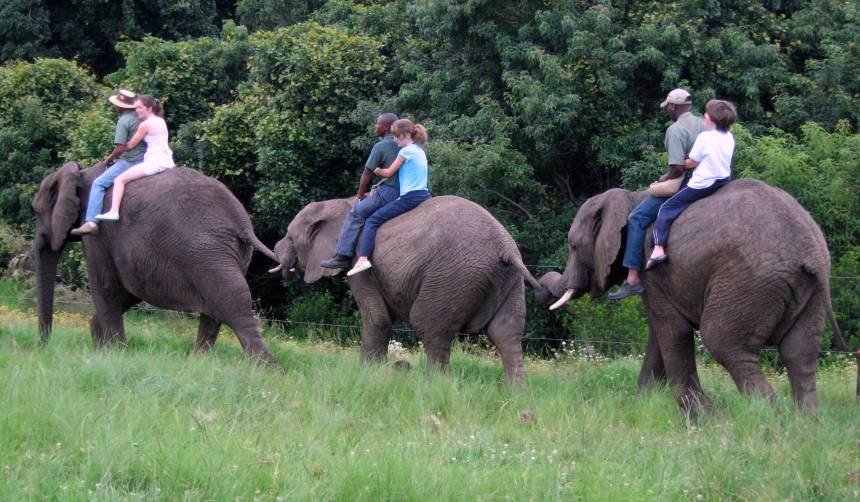
Elephant riding offered at The Crags. Picture credit: Elephant Sanctuary
To make this fact finding mission as objective as possible, I will use the Five Freedoms Concept that was developed for the welfare of domestic farm animals and is used in animal welfare issues worldwide. This concept is also used in the ABTA Animal Welfare Guidelines – Unacceptable and Discouraged Practices.
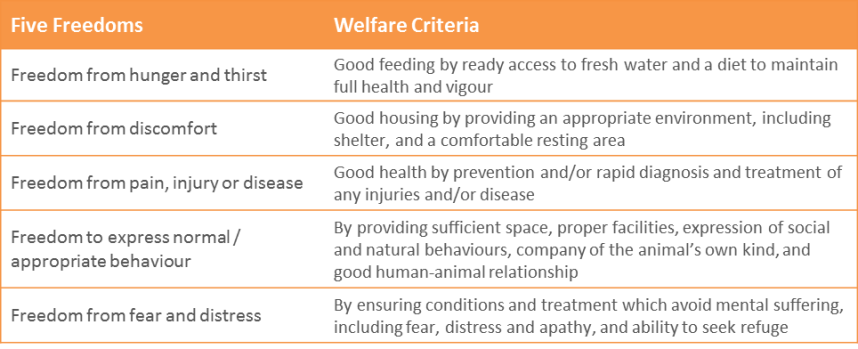
1. Freedom from hunger and thirst
In the process of breaking the elephant’s spirit (see also Freedom 3), the animal is often deprived of water and food, according to World Animal Protection (WAP).
Under natural conditions, elephants spend up to 16 hours per day foraging for food, eating a wide variety of vegetation and fruits. The foraging time of a captive elephant used for riding is heavily restricted or even absent, making the food and water presentation unnatural and constantly interrupted due to the entertainment programmes for the paying visitors. Their diet is generally limited, consisting of the bare basics with a lack of variety that makes the provision of supplements essential, especially Vitamin E. (NSPCA & ABTA)
2. Freedom from discomfort
The camps where the elephants are kept when not used to ride are unnatural with often unsuitable substrate like concrete that can result in foot problems. The riding takes place at any time of the day, even during the heat of the day, and during which the elephants lack places to hide from the public. (NSPCA)
Obviously, all the issues mentioned below under Freedom from pain, injury or disease apply to this section too.
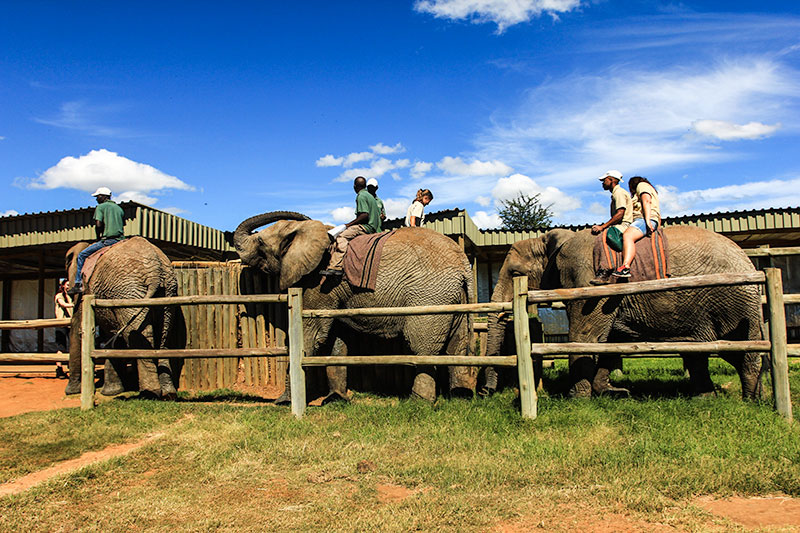
Elephant riding on the Garden Route. Picture credit: Volunteer Expeditions
3. Freedom from pain, injury or disease
First and foremost, young elephants are broken into submission, typically by restraining them with ropes or chains, so they they can only move when instructed. This often includes inflicting pain by using bullhooks, wooden battens, and whips (WAP). This training process, based on a system of dominance, can last for weeks until the animal
becomes submissive and compliant. Once the handler has established dominance, this situation is then maintained through a delicate balance of fear and reward (ABTA).
More than half of the elephant facilities in South Africa use this method called ‘free contact’, which includes the use of physical punishment by using a bull-hook to train the elephants (NSPCA) and sometimes even electric cattle prods (see pictures below). According to WAP, elephant handlers in Southern Africa confirmed that young elephants undergo a similar breaking process as used in Asia.
The above pictures are taken on the premises of one of the elephant riding facilities in South Africa and show the excessive use of tools inflicting physical pain on young and juvenile elephants in ‘training’ and their sustained injuries (source: NSPCA Facebook page). The NSPCA laid a case of animal cruelty charges in May 2014, which is still ongoing. To put your minds at rest, these elephants are currently free-roaming at a ‘foster home’ – a game reserve on the Garden Route.
A fully trained elephant used for elephant back safaris, carries at least one person if not more on its back, either on a blanket or saddle, but often with no padding at all. Although elephants are large and strong animals, they are not built to carry weight on their backs, which can cause pain and potentially spinal injury. Carol Buckley, president of Elephant Aid International explains that “instead of smooth, round spinal disks, elephants have sharp bony protrusions that extend upwards from their spine. These bony protrusions and the tissue protecting them are vulnerable to weight and pressure coming from above.”
4. Freedom to express normal/appropriate behaviour
In the wild elephants live in complex, multi-layered, matriarchal groups comprising family units of related females and their offspring. Young elephants are often taken away from their mothers and siblings, more often than not captured from the wild, and forced to live in more or less solitary conditions away from their highly social family groups (NSPCA).
African elephants in captivity generally are allowed to forage under supervision for some time of the day, but the space available for foraging is insufficient. The nights are spent in confined camps and in many cases the elephants are chained. These unnatural conditions restricts them from forming proper social relationships and forces these naturally nocturnal and diurnal creatures to be inactive. (WAP)
It is commonplace for male elephants in musth, when they become more difficult to manage, to be chained for long periods of time. The chains can not only physically harm the elephants, but can be psychologically detrimental to these naturally active, inquisitive and intelligent animals. (ABTA)
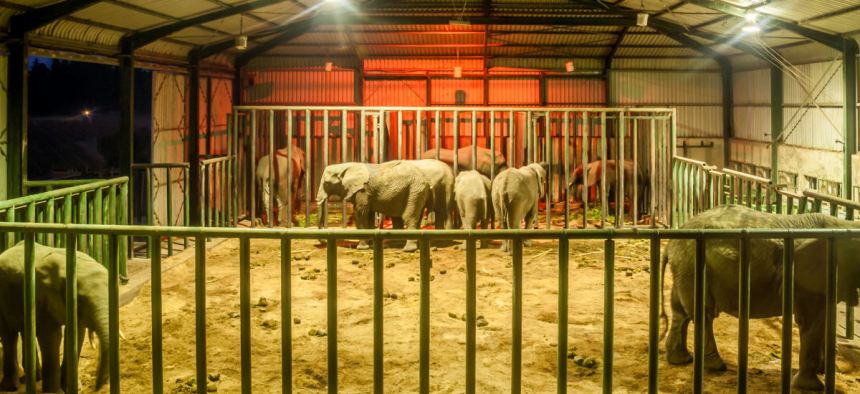
Night camp seen from guest accommodation. Picture credit: Knysna Elephant Park
5. Freedom from fear and distress
The main issues under this heading are the lack of escape from the public and the excessive human handling and human touch (NSPCA). Again, most of the issues mentioned under Freedom from pain, injury or disease also apply to this section.

Elephant interaction. Picture credit: Inkwenkwezi Private Game Reserve
A way forward
The above facts leave the obvious question: what elephant encounters are acceptable or ethical and which ones are not? What are the 50 shades of grey (or rather green) between black and white? Should we even have shades of grey or green? The answer in my personal opinion is: NO, absolutely not!
Deciding whether hands-on animal encounters are ethical is extremely difficult for anybody, let alone visitors, who don’t necessarily have all the facts. As I said in my Hands off our Wildlife blog, the above message is clear and one-dimensional, making choices for tourists easy when visiting wildlife attractions.
I do understand that tourism businesses need to generate an income from their wildlife in order to afford looking after those same animals properly. However, as clearly stated in ATBA Animal Welfare Guidelines – Elephants in Captive Environments: “the commercial value of keeping and exhibiting elephants should never outweigh their welfare“. Although, I personally don’t agree on all aspects and guidelines provided by ABTA, the brochure does give very useful minimum standards and best practice guidelines for keeping elephants in captivity.
Globally, tourism associations are encouraging their members to stop promoting unethical wildlife attractions, such as elephant back rides, and many tour operators have responded by taking elephant riding and shows out of their brochures. The tourism products now need to respond accordingly and become more innovative in their wildlife offerings. Business as usual is no longer adequate nor is it acceptable.
Last year, the Wildlife Conservation Research Unit at Oxford University audited 24 different wildlife attractions across the world in terms of their welfare standards. One of the worrying findings was that at least 80% of the visitors left positive TripAdvisor feedback, even for those wildlife attractions with the poorest welfare standards, which shows the dire need for more education and awareness raising among tourists. We need to get the message out there that all elephant riding is unacceptable with no exceptions. The only way to enjoy these magnificent creatures is in the wild and from afar.
Click below to take the pledge and join the movement to help protecting animals from cruelty
This article was originally published on the Green Girls in Africa website.


